Filter by
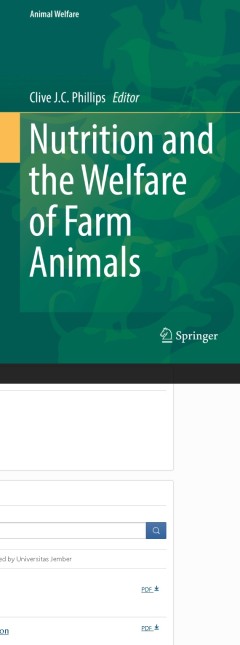
Nutrition and the Welfare of Farm Animals
This book explores the importance of good nutrition in ensuring an adequate standard of welfare for farm animals. It is often not realized that farm animals can suffer when they are fed unsuitable diets, which may be because these diets are more economic or the farmer does not know how to rectify poor nutrition. This book reveals how to recognize and deal with feeding problems in farm animals, …
- Edition
- 1
- ISBN/ISSN
- 978-3-319-27354-9
- Collation
- XXIX, 247
- Series Title
- Animal Welfare
- Call Number
- -
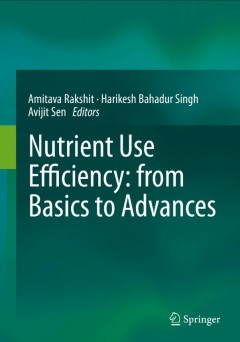
Nutrient Use Efficiency: from Basics to Advances
This book addresses in detail multifaceted approaches to boosting nutrient use efficiency (NUE) that are modified by plant interactions with environmental variables and combine physiological, microbial, biotechnological and agronomic aspects. Conveying an in-depth understanding of the topic will spark the development of new cultivars and strains to induce NUE, coupled with best management pract…
- Edition
- 1
- ISBN/ISSN
- 978-81-322-2168-5
- Collation
- XXIII, 417
- Series Title
- -
- Call Number
- -

Apocarotenoids of Crocus sativus L: From biosynthesis to pharmacology
This book is a product of years of research on saffron biology. It intends to give a broad but concise overview of the various aspects of apocarotenoid biosynthesis in Crocus sativus, its regulation and pharmacology . Crocus sativus L. of family Iridaceae is an important medicinal plant. The dried stigma of C. sativus flower is considered as the world's costliest spice. Saffron is the source…
- Edition
- Ed. 1
- ISBN/ISSN
- 978-981-10-1899-2
- Collation
- IX, 61
- Series Title
- SpringerBriefs in Plant Science
- Call Number
- 540.1 BAB a
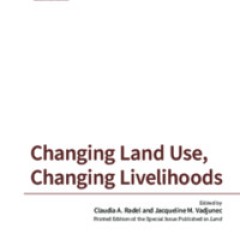
Changing Land Use, Changing Livelihoods : Smallholders Today
his book brings together eleven works by scholars within and beyond geography, to argue the case for a continued engagement with smallholder agricultural studies. The research detailed is largely empirical and draws on a wide spectrum of mixed qualitative and quantitative methodologies. The case studies cover a range of geographic locations, including Brazil, Burkina Faso, South Africa, Botswan…
- Edition
- -
- ISBN/ISSN
- -
- Collation
- -
- Series Title
- -
- Call Number
- 630 CHA
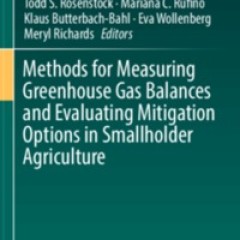
Methods for Measuring Greenhouse Gas Balances and Evaluating Mitigation Optio…
This book provides standards and guidelines for quantifying greenhouse gas emissions and removals in smallholder agricultural systems and comparing options for climate change mitigation based on emission reductions and livelihood trade-offs. Globally, agriculture is directly responsible for about 11% of annual greenhouse gas (GHG) emissions and induces an additional 17% through land use change,…
- Edition
- -
- ISBN/ISSN
- 978-3-319-29794-1
- Collation
- XV, 203 halaman
- Series Title
- -
- Call Number
- 630 MET
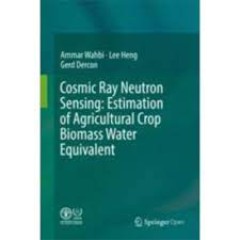
Cosmic Ray Neutron Sensing : Estimation of Agricultural Crop Biomass Water Eq…
This open access book provides methods for the estimation of Biomass Water Equivalent (BEW), an essential step for improving the accuracy of area-wide soil moisture by cosmic-ray neutron sensors (CRNS). Three techniques are explained in detail: (i) traditional in-situ destructive sampling, (ii) satellite based remote sensing of plant surfaces, and (iii) biomass estimation via the use of the CRN…
- Edition
- -
- ISBN/ISSN
- 978-3-319-69539-6
- Collation
- X, 33 halaman
- Series Title
- -
- Call Number
- 630 WAH c
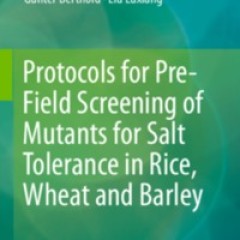
Protocols for Pre-Field Screening of Mutants for Salt Tolerance in Rice, Whea…
This book offers effective, low-cost and user-friendly protocols for the pre-field selection of salt-tolerant mutants in cereal crops. It presents simple methods for measuring soil salinity, including soil sampling and the analysis of water-soluble salts, and describes a detailed, but simple, screening test for salt tolerance in rice, wheat and barley seedlings, which uses hydroponics. The prot…
- Edition
- -
- ISBN/ISSN
- 978-3-319-26590-2
- Collation
- X, 37 halaman
- Series Title
- -
- Call Number
- 630 BAD p
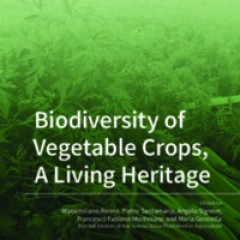
Biodiversity of Vegetable Crops, A Living Heritage
Intensive agriculture has generally resulted in higher productivity, but also in a trend towards decreasing levels of agro-biodiversity, which represents a key point in ensuring the adaptability and resilience of agro-ecosystems in the global challenge to produce more and better food in a sustainable way. The biodiversity of vegetable crops includes genetic diversity—both as species diversity…
- Edition
- -
- ISBN/ISSN
- ISBN 978-3-03897-721-6
- Collation
- -
- Series Title
- -
- Call Number
- 630 BIO

Culture Management : Strategy and marketing aspects
"Dr Lukasz Wroblewski's book Culture Management: Strategy and Marketing Aspects clearly recognises that the pressures on the cultural sector in the 21st Century are greater than ever before. Based on robust academic research within a practical industry context, this book addresses all the key issues related to marketing strategy and planning for the cultural industries. It will be an invaluable…
- Edition
- -
- ISBN/ISSN
- 9783832543785
- Collation
- -
- Series Title
- -
- Call Number
- 745 CUL
Digital Transformation in Semiconductor Manufacturing : Proceedings of the 1s…
This open access book reports on cutting-edge electrical engineering and microelectronics solutions to foster and support digitalization in the semiconductor industry. Based on the outcomes of the European project iDev40, which were presented at the two first conference editions of the European Advances in Digital Transformation Conference (EADCT 2018 and EADTC 2019), the book covers different,…
- Edition
- -
- ISBN/ISSN
- 978-3-030-48602-0
- Collation
- VIII, 146 halaman
- Series Title
- -
- Call Number
- 621 DIG
 Computer Science, Information & General Works
Computer Science, Information & General Works  Philosophy & Psychology
Philosophy & Psychology  Religion
Religion  Social Sciences
Social Sciences  Language
Language  Pure Science
Pure Science  Applied Sciences
Applied Sciences  Art & Recreation
Art & Recreation  Literature
Literature  History & Geography
History & Geography